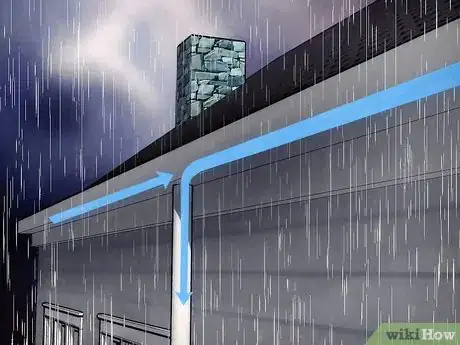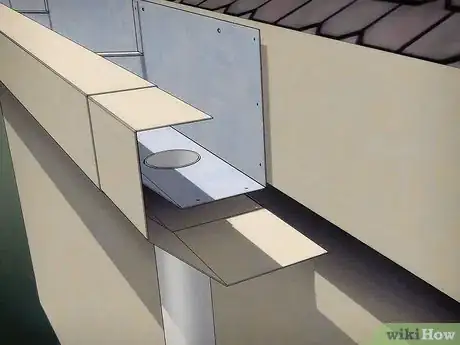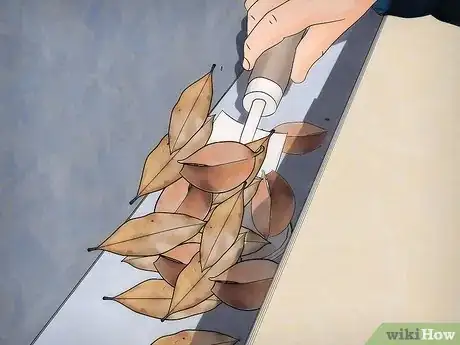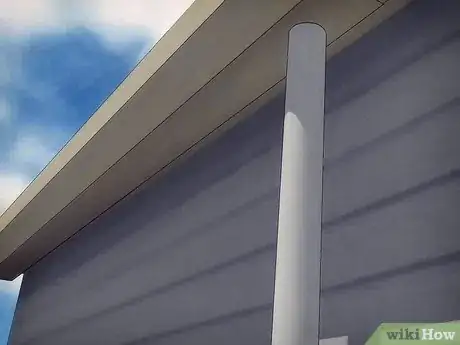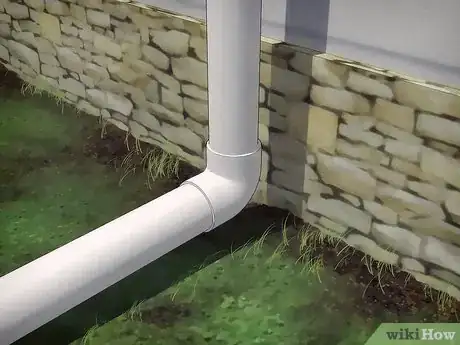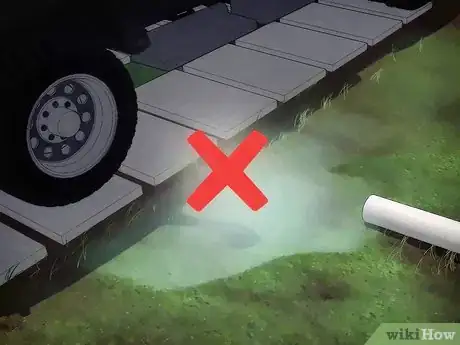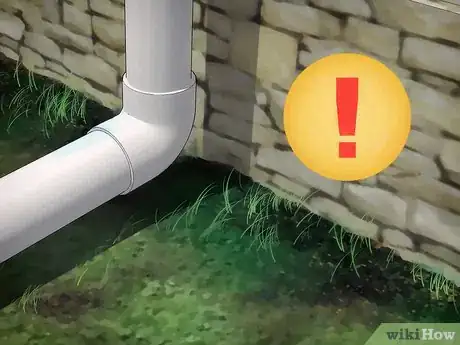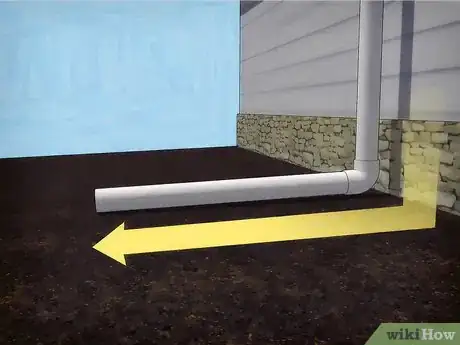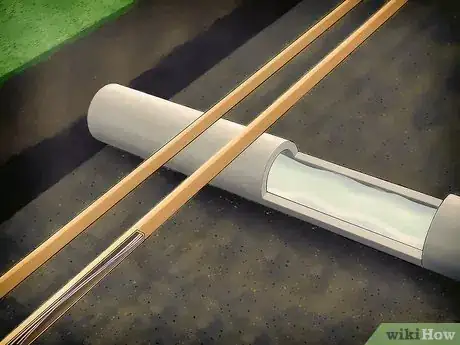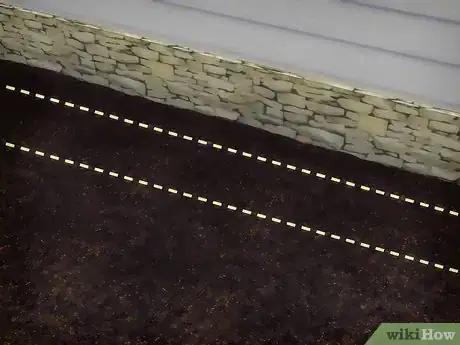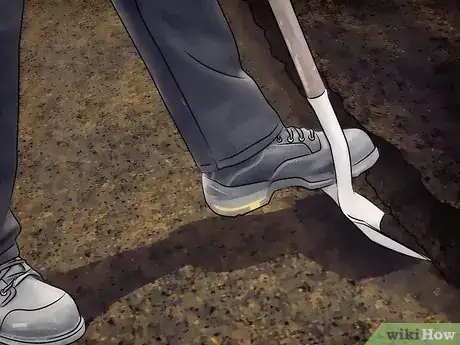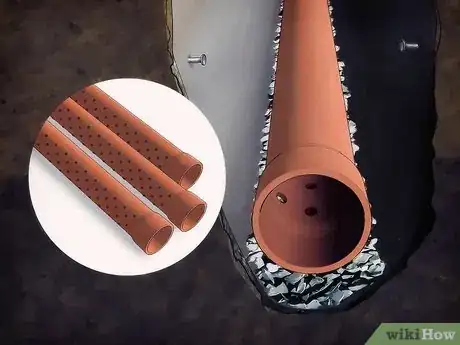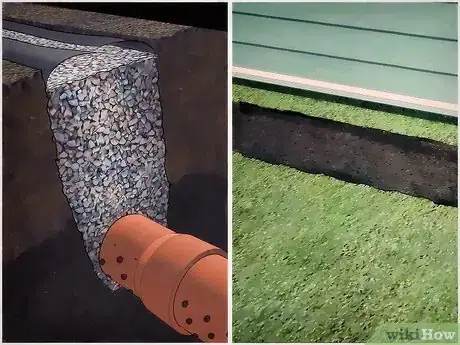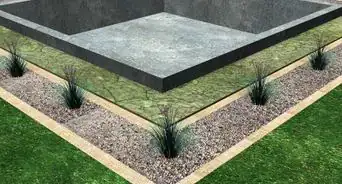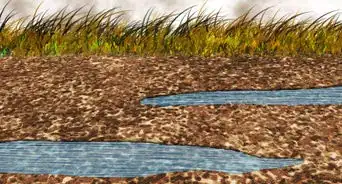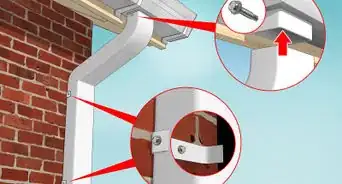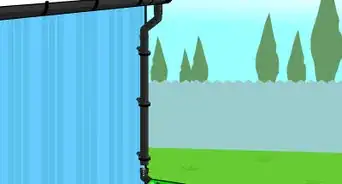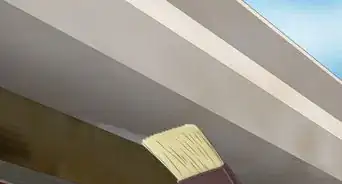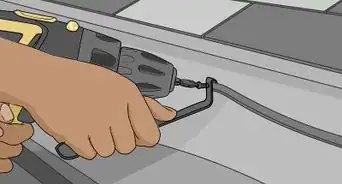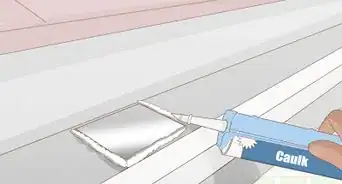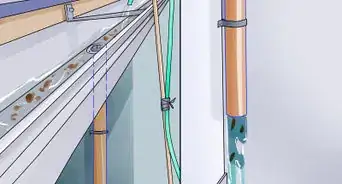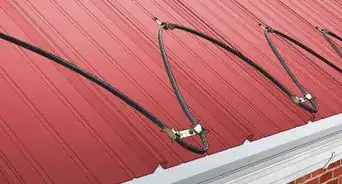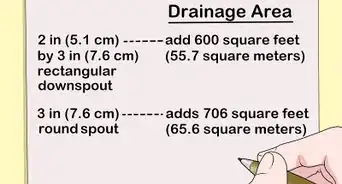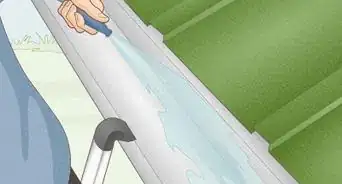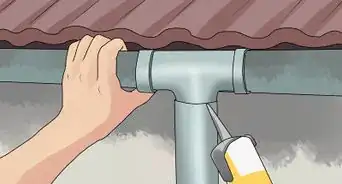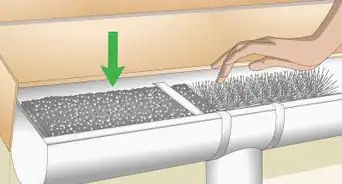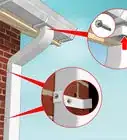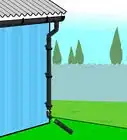This article was co-authored by David Balkan and by wikiHow staff writer, Amber Crain. David Balkan is a Professional Plumber, CEO of Balkan Sewer and Water Main Service, and President of Balkan Sewer and Drain Cleaning. As a hands-on owner of these companies for over 40 years, David is knowledgeable about water service lines, sewers, and drain line issues. David is a Committee Chairman of the Master Plumbers Council and has sat on the Executive Committee of the Sub Surface Plumbers Association of New York for over 30 years. His knowledge and solution-oriented approach contributed to Balkan Sewer and Water Main Service being the largest and most trusted service in New York City and the recipient of the 2017 Angie’s List Super Service Award.
There are 13 references cited in this article, which can be found at the bottom of the page.
wikiHow marks an article as reader-approved once it receives enough positive feedback. In this case, 90% of readers who voted found the article helpful, earning it our reader-approved status.
This article has been viewed 322,659 times.
Rain showers, thunderstorms, tropical storms, thaws, and other forms of inclement weather can all result in a large amount of water collecting around your home in a short period of time. Without adequate drainage, excess water can damage your roof, walls, foundation and landscaping. Draining water away from your home starts with installing a sound gutter system that has extensions to carry the water away from your home. Adding a gentle downward slope to the ground around your home is also helpful. If additional drainage is necessary, you can install a French drain, which very effectively redirects water away from your home.
Steps
Maintaining Your Gutter System
-
1Invest in a gutter system.[1] If your home doesn’t have any gutters, consider investing in a gutter system—especially if you live in a rainy climate. Gutters collect the rainwater that runs off the roof of your home and deposits it onto the ground. A good gutter system will direct rainwater away from your home, which keeps it from leaking into the foundation and washing the foundation soil away.[2]
- Most residential gutters are made from aluminum. Aluminum gutters are affordable and will last a long time.
- Gutters made with vinyl, galvanized steel, or copper are also available.
- Unless you have previous experience installing gutter systems, have a professional install them.
-
2Inspect your gutters for effectiveness. For your gutters to work properly, they should slope down 1⁄2 inch (1.3 cm) toward the downspout for every 10 feet (3.0 m), by code.[3] They must also remain free of clogs, holes, and sags. The most common gutter problem is blockage. Leaves, needles and other debris get trapped in the system, causing rain water to spill off your home too close to the foundation. Inspect your gutters closely and remove any debris that you find.[4]
- If you find that your gutters are sagging, check the hangars. These can deteriorate over time, but can easily and cheaply be replaced.
- Check for leaks and holes in the gutters, as well. If you find any, gutter sealant can be purchased at any hardware store.
Advertisement -
3Clean your gutters regularly.[5] Gutters should be routinely cleaned of debris at least once per year. If your home is surrounded by a lot of trees, clean them out twice per year. Inspect your gutters after big rainstorms, as well, since these can cause a significant buildup of debris. Use a sturdy ladder to get up to the gutters. Wear rubber gloves and clear the muck out of the system by hand.
- Follow up the debris removal with a good flushing of water from your garden hose. Make sure the water is flowing freely out of the downspouts, and remove and blockages that may be preventing this.
- If you prefer, you can hire a professional to clean your gutters. The charge for this service varies, depending on the size of your home, but usually ranges from $50 to $250.
Extending Downspouts and Increasing Ground Slope
-
1Inspect your downspouts. Downspouts are the parts of the gutter that run vertically from the roof gutter to the ground. They should direct water at least 6 feet (1.8 m) away from the foundation of your house. If yours currently don’t do this, you can add extensions to make them more effective. These extensions are inexpensive and relatively easy to install.[6]
- Elbows and extensions can be obtained at any hardware store.
- Typical cost is just under $20 per extension.
-
2Install downspout extensions.[7] This is done by attaching an elbow to the end of the downspout and then connecting the extension piece. The extension piece will be several feet of straight pipe. In most cases, these extensions are installed by simply screwing them on.
- Make sure to direct the water at least 6 feet (1.8 m) away from your home’s foundation.
- If necessary, you can connect the downspouts to PVC pipe and bury the pipe underground to direct the water further from your home.
-
3Avoid pointing your downspout extensions toward your driveway. In winter, water deposited onto your driveway can freeze, causing a number of dangerous situations.[8] The ideal spot for water to come out of the extension is on a sloped part of the ground, so that the water continues to drain further away from the house.
- Make sure the water doesn’t end up on an incline that slopes back down to your home. This will result in the water draining straight back to the foundation of your home.
-
4Inspect the ground slope next to the foundation of your house. Overflowing gutters and inefficient downspouts can erode the ground around the foundation of your home. This erosion will create a trench in the soil that traps the water there. If you see any gaps like this around your home, fill them in with soil. Firmly pack the soil in place for best results.
- Avoid soils with high clay content, since these drain poorly. Purchase granular soil with a high sand content.[9]
- You can buy bagged soil at any home improvement store. Buy 1 bag to start the job. Once you know how much area 1 bag covers, you'll have a good idea of how many more you'll need to finish the job based on the size of your home and how steep you want to make the downslope.
-
5Add enough dirt to create a gentle slope. Instead of just filling the gaps in with soil, add a slight excess of it. This will create a gentle slope that leads away from the foundation of the house, preventing water from collecting around the foundation. This gentle slope should extend, at minimum, about 2–3 feet (0.61–0.91 m) from the house.
- Pack soil around your house and slope it downwards at about 1 inch (2.5 cm) per 1 foot (0.30 m).[10]
- Be sure to pack the soil firmly when creating the slope. Then, add grass seed, which, once it takes root, will prevent the soil from eroding.
Installing a French Drain
-
1Locate and mark the underground utility lines on your property. A French drain involves digging a trench in your yard. It’s not difficult to do yourself, but it’s important that you contact your local utility company a few days before you begin the work. Have them locate and mark all of the underground utility lines around your home. [11]
- These underground utilities include gas, water, sewage, electric, and phone lines.
- If you damage any of them while you’re installing the French drain, repair costs can be significant.
-
2Draw a drainage plan. Make a simple sketch of your property. Include the home, driveway, porches, the street, and any other applicable features. Go into your yard with a line level or builder’s level and use it to figure out where the high and low spots are. Note these spots on the sketch, then draw arrows showing how the water tends to flow on your property.[12]
- You now have a diagram to help you properly and efficiently redirect drainage away from your home.
- You should never plan to redirect water to run onto your neighbor’s property. If you are considering directing water into the street or storm sewer, find out what regulations apply by contacting the city for information.
-
3Start digging the trench. A French drain is essentially a gravel-filled trench that includes a perforated pipe which acts as a drain around your home.[13] [14] Begin the digging 4–6 feet (1.2–1.8 m) away from the foundation of your home. Make the trench about 6 inches (15 cm) wide and about 24 inches (61 cm) deep. The trench should extend to the lowest part of your yard.
-
4Add a layer of gravel to the trench. There will be loose soil at the bottom of the trench. Compact it tightly. Lay washed gravel on top of the compacted soil in a layer that is 1–2 inches (2.5–5.1 cm) thick.[17]
- Never lay piping directly onto the soil. The gravel beneath it helps to properly disperse the water, along with the gravel surrounding it.[18]
-
5Install the piping. The piping should be perforated with 2 rows of holes running down its length. Wrap the piping in landscaping fabric to prevent the holes from getting plugged.[19] Then, lay the piping so that the holes point down toward the earth, not up toward the sky.[20]
- If you lay the piping with the holes pointing up, they will get clogged with gravel and the drain will not work properly.
-
6Fill the trench with gravel. After you’ve put your piping in place, use washed and rounded gravel to fill in the trench. The gravel pieces should be 1 inch (2.5 cm) or larger in diameter. The gravel should completely fill the trench within 1 inch (2.5 cm) of the surface.[21]
- Cover the remaining 1 inch (2.5 cm) of space with a piece of sod. This will disguise the trench.
Community Q&A
-
QuestionWhy are the holes in the pipe facing down? Wouldn't you want them facing up to catch the water?
 Community AnswerThe holes must face downward so that underground water can enter the discharge pipe. Remember, the bulk of the water above ground will enter through the downspout. If the holes are facing upward, water carrying sediment and other debris will eventually clog the perforated holes and the drain will not function correctly.
Community AnswerThe holes must face downward so that underground water can enter the discharge pipe. Remember, the bulk of the water above ground will enter through the downspout. If the holes are facing upward, water carrying sediment and other debris will eventually clog the perforated holes and the drain will not function correctly. -
QuestionCan putting a rain gutter along the porch edge stop water from collecting on the porch?
 Community AnswerPossibly. If the gutter has a drain that leads off the porch or away from the porch, it should not be an issue. However, gutters are meant to catch water coming off your roof. Rain could still end up on your porch depending on how hard it is raining or the direction of the wind.
Community AnswerPossibly. If the gutter has a drain that leads off the porch or away from the porch, it should not be an issue. However, gutters are meant to catch water coming off your roof. Rain could still end up on your porch depending on how hard it is raining or the direction of the wind. -
QuestionWhy wouldn't I lay the french drain right up against the foundation? Why 4 - 6 ft away?
 Community AnswerYou don't want any water going back against the house, since this drains through most of the pipe. IT would add more water to the sump pump and seep into the basement or crawlspace.
Community AnswerYou don't want any water going back against the house, since this drains through most of the pipe. IT would add more water to the sump pump and seep into the basement or crawlspace.
References
- ↑ https://www.houselogic.com/organize-maintain/home-maintenance-tips/fast-fixes-common-gutter-problems/
- ↑ http://porch.com/advice/gutter-maintenance-101/
- ↑ https://www.thisoldhouse.com/how-to/how-to-install-rain-gutters
- ↑ https://www.houselogic.com/organize-maintain/home-maintenance-tips/fast-fixes-common-gutter-problems/
- ↑ https://www.houselogic.com/organize-maintain/home-maintenance-tips/how-to-clean-rain-gutters/
- ↑ https://www.houselogic.com/organize-maintain/home-maintenance-tips/fast-fixes-common-gutter-problems/
- ↑ https://www.thisoldhouse.com/how-to/how-to-drain-downspout-water-flow-away-house
- ↑ https://www.thisoldhouse.com/how-to/how-to-drain-downspout-water-flow-away-house
- ↑ http://buildingadvisor.com/buying-land/site-characteristics/slope-soils-water-vegetation/
- ↑ http://articles.chicagotribune.com/2010-05-25/classified/sc-home-0524-diy-drainage-20100525_1_trench-water-slope
- ↑ http://www.easydigging.com/Drainage/installation_french_drain.html
- ↑ http://www.familyhandyman.com/landscaping/how-to-achieve-better-yard-drainage/view-all
- ↑ https://www.ndspro.com/french-drain-installation-guide/
- ↑ David Balkan. Professional Plumber & CEO of Balkan Sewer & Water Main. Expert Interview. 30 March 2021.
- ↑ http://www.askthebuilder.com/a-simple-trench-drain/
- ↑ http://www.easydigging.com/trenching_guide.html
- ↑ http://www.askthebuilder.com/a-simple-trench-drain/
- ↑ http://www.familyhandyman.com/landscaping/how-to-achieve-better-yard-drainage/view-all
- ↑ David Balkan. Professional Plumber & CEO of Balkan Sewer & Water Main. Expert Interview. 30 March 2021.
- ↑ http://www.askthebuilder.com/a-simple-trench-drain/
- ↑ http://www.askthebuilder.com/a-simple-trench-drain/
About This Article
To drain water away from your home, invest in a gutter system so that rainwater on the roof doesn’t leak into your foundation. If you already have gutters, be sure to clean them at last once a year so that debris doesn’t block them and cause water to back up. Additionally, install extensions on the gutter downspouts to direct water further away from your house. Finally, add some dirt around the foundation of your home to create a gentle slope so that water drains away more easily. For tips from our Handyman reviewer on how to install a French drain system in your yard, read on!
